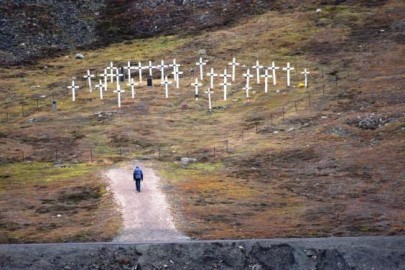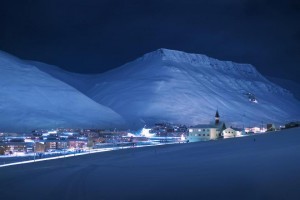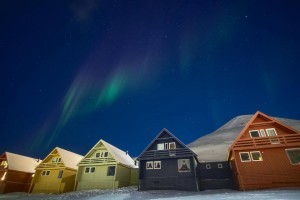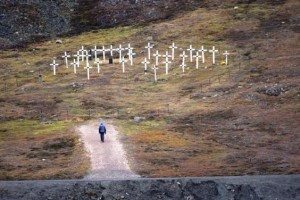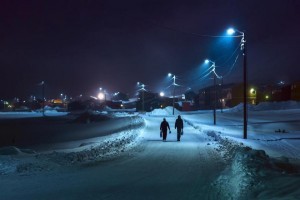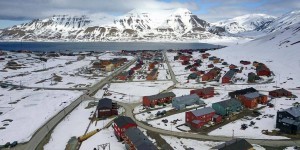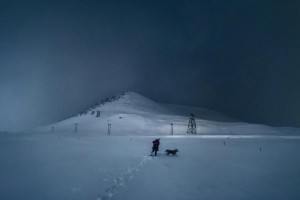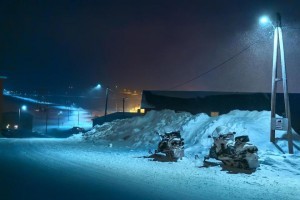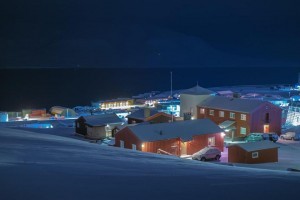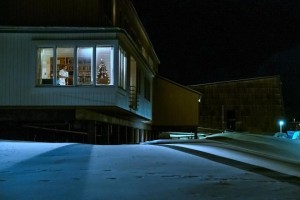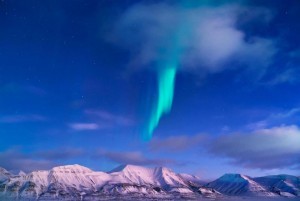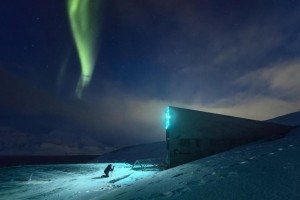These stunning snaps from the remote Norwegian town of Longyearbyen make it look something straight out of a fairytale.
But behind the pictures lies a somewhat bizarre law which the 2,000 residents in the town have to follow – it is illegal to die there.
Dying has been banned on the island since 1950, when it was discovered that bodies in the local cemetery were not decomposing because of the chilly temperatures.
The island’s climate is so arctic that in the 2000’s, scientists, morbidly fascinated by the discovery, tested corpses buried there who succumbed to the 1917 influenza virus – and to their amazement, retrieved live samples of the virus.
Residents had been living among the deadly virus for decades, without even realizing it.
The graveyard no longer takes any new inhabitants because of fears disease will spread throughout the island, meaning that even those who have lived their whole life on the island, cannot be buried there.
In a bleak prospect, those who are terminally ill are shipped off the island and flown hundreds of miles to the mainland of Oslo, where they will spend the remainder of their days until death.
Technically, cremation urns can be buried in the graveyard, but supposedly few people have taken up this option.
There is no old people’s home on the island, or any institutions set up to care for the frail and elderly, so they must be moved ahead of their death.
Jan Christian Meyer, from the Norwegian University of Science and Technology, said: “‘If you seem to be about to expire, every effort will be made to send you to the mainland.”
But it is not only death on the island that poses a dilemma for its residents – daily life there can take its toll too.
Expectant mum’s cannot give birth on the island because there is no hospital, so instead weeks before their due date have to fly to the mainland, only returning to their homes weeks after their baby is born.
Longyearbyen’s is thought to be one of the world’s northernmost settlements, and its location poses a unique set of challenges.
For months of the year, there is no sunlight at all – from dawn until dusk, there is just darkness.
And amongst the darkness, polar bears lie in the wilderness, just outside of the town.
Although the government does try and prevent the animals wandering around the area, the snowy terrain means seeing a polar bear is not uncommon.
Banning death is not the only unusual law on the island, which doesn’t see sunlight for months on end because of its northern location.
Cats are banned to protect the Arctic bird population and visitors are expected to take their shoes off in virtually every building, not just people’s homes.
There is also a restriction on how much alcohol residents can buy every month, because unlike in the rest of Norway, alcohol prices on the island are low.
Only residents who have jobs are allowed to live on the island, because you must be able to sufficiently support yourself enough to survive the harsh day to day life.
Source: thesun
Ask me anything
Explore related questions
